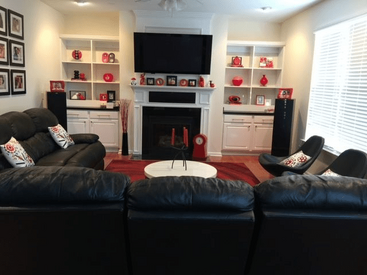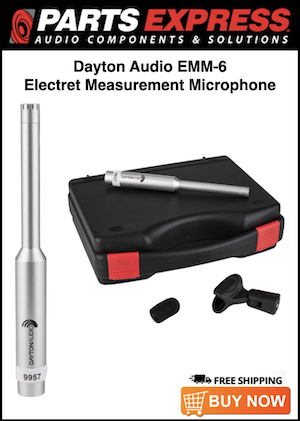It might be interesting to see an .mdat file to see the alignment of the impulse responses between the various speakers... Especially the L&R mains with the subs...
It might not be easy to get that "chest thump" when your subs are pointed at the back of the couch... Are you driving your L&R mains as full range (large) down as low as they will go (30Hz)... And if not, why not... They are made for that...
@ddude003 The MDAT files are very big and I am not able to attach them. I have ZIPPED them all up and put them on my Google Drive for download. I hope you all can access them using
https://drive.google.com/drive/folders/1msyWvIzToZxCBbU-tHufjNXdSeAWu0YI?usp=sharing link. If you have any trouble downloading them, please let me know. These were created using REW V5.40 Beta 19 and Beta 20 versions of the software.
When this ZIP file is extracted, you will see the following files. A brief description of how I organized is given below.
NOTE: You will need to update your REW preferences to be able to work with 100 measurements as some of these files have over 50 measurements. If you do not see all the measurements, please go to Preferences > View Tab > Maximum Measurements and ensure it is set to 100. Changing this value will require you to RESTART REW.
010_SubAlignmentOnly.MDAT - This is the file I used to align the 2 subs I have. AM stands for AntiMode. ByP stands for AntiMode being bypassed. I tried couple of different delays in miniDSP to find out that I get best alignment at 2.2 msec of delays between the two subs which are on the LEFT and RIGHT side of my couch. I set my AVR CrossOver to 200Hz to get the maximum output from LFE for creating a proper LFE EQ later before finding the best crossover.
020_SubEqFlat(20-150,18-200).MDAT - Using the aligned sum, I used this file to create a flat EQ using the REW's EQ panels. You will see I set the Target LFE at 95db to have REW generate the EQ with 1 db flatness. Then I added the 8 db Harmon Curve which is another target in this file. To add this harmon curve, I used the miniDSP Input EQs so that I can easily adjust this house curve to my needs or try few different curves. Previously I would make everything as I curve but I learnt that it is best to separate the two out. The measure that say LFE REQ Filters is a measure I took from within the EQ panel where REW has an option to take a measurements with the calculated filters and it adds these filters into the notes. The LFE EQ measure is taken with the filter loaded into the miniDSP hence the notes does not include the filters being used.
030_SubEqHouseCurve(8db).MDAT - This file has just 2 measurements showing how turning the miniDSP input EQ filters ON and OFF adds the 8 db house curve.
040_MainsAlignmentWithSub.MDAT - This file shows using 80 Hz CrossOver and speakers as Large (you will see SpL for Large Speakers and SpS for Small Speakers in the measurement names) how were the measurements coming when using MCACC default calibration.
050_SpeakerAlignment.MDAT - This file shows that I used the REQ Impulse alignment to find the manual distances so that all my speaker impulses align properly. The manual speaker distances are in the measurement names. All measurements were taken using 80Hz crossover with speakers set to LARGE as I was following the OCA manual home theater calibration setup procedures.
060_SpeakerMeasurements.MDAT - Ignore this file because I took some measurements without resetting the AVR settings so I had to go back to retake the measurements.
061_SpeakerMeasurements.MDAT - I took 6 measurements of each speakers at the 6 spots to cover all of my couch so that I can then create a vector average before creating the EQ for the speakers. This file has 48 measurements (6 positions * 8 speakers [7.1 setup]).
070_SpeakerVectorAverages.MDAT - Ignore this file because I took some measurements without resetting the AVR settings so I had to go back to retake the measurements.
071_SpeakerVectorAverages.MDAT - This file has all the previous 48 measurements from
061_SpeakerMeasurements.MDAT plus the vector averages of each speaker which has been cross correlation aligned. FYI, I did make the 0 position measurement of the respective speaker as my 1st measurement before clicking the cross corrlation align button as was mentioned by OCA in a later video as to how REW does this correlation alignment. Once the Vector Averages are created, I REORDERED the 0 position measurements in the same order so it is easy to see them. Just mentioning here that I did not make any mistake in this process.
081_SpeakerVectorAveragesOnly.MDAT - This file just as the vector averages hence all the traces are shown thick which is the default option in REW to distinguish between vector average trace and a measurement trace. I created this file so that I can quickly see what my vector averages look like without opening really large MDAT files. Also I switched to using 81 as the number to remind me that I made a mistake at 60 and 70 point and hence this is continuation from 61 and 71 measurements.
082_SpeakerFreqDependentWindows-15Cycles.MDAT - This file creates a copy of each vector average and applies the default 15 cycle Frequence Dependent Windowing followed by Psychoacoustic Smoothing so that I can see how the full measurement looks like. I later found that both these settings can be undone very easily so this copy was not needed. I created the copy because of following OCA manual claibration video where I did not realize these can be easily removed at that time.
090_SpeakerEQ.MDAT - This file is a copy of the
082_SpeakerFreqDependentWindows-15Cycles.MDAT file where I started to create the manual EQ for each speaker using REW EQ panel. You will notice that I added a target of 85 db measurement since my AVR volume for everything I have done is -10 db. I consider 0 db AVR as reference of 95 db for speakers and 105db for LFE. If you click on any of the FDW measurement and you open the EQ panel, you will see the target and the EQ that REW calculated for each of my speakers. All speakers as per OCA were calibrated as LARGE (they are truly LARGE but even if they were not according to OCA LARGE should be used so that is what I followed).
100_SpeakerSPLAdjustments.MDAT - I then loaded all the generated EQ from
090_SpeakerEQ.MDAT step into AVR and took fresh measurement readings. Then I applied 15 Cycle Frequency Dependent Windowing to each speaker measuement followed by Psychoacoustic Smoothing to them. At this point, I created a copy of each of these measure (except LFE) and used the SpL Alignment tool to use 1Khz as the alignment point with 4 octaves of range for SPL alignment on the copy. The measurement names shows the setting. At this point in OCA video he talks about manually moving the original speaker measurement to find the offset but I found that using the INFO button I can see the ALIGN OFFSET value very easily so that is what I used to set my Speaker Channel Levels in the AVR.
110_SpeakerValidations.MDAT - In this last file, I took various readings using different CrossOver points (XO) with speakers being Large (SpL) or Small (SpS) and found that I get best smooth response when I set my speakers to SMALL and cross over as 80Hz.
This options of setting speakers as SMALL in the end and finding the best cross over has been mentioned in this thread as well as all over the YouTube videos and various forum threads. My understanding is that we buy Large speakers to get the smoothes crossover as speakers tend to lose their smoothness as they get close to their marketed low-end of the audio spectrum. I am also not able to do Bass Management like miniDSP type to my LEFT & RIGHT and even CENTER channel due to limited EQ options in AVR so I believe using SUB with crossover make it smooth and cleaner. Originally I was under the assumption that I could use my RF7II tower speakers as 2 additional sub to smooth out the bass response. That is proven wrong with these measurements as I cannot control the bass frequency response of them like my subs. Now If I buy another miniDSP and then run my Left and Right speakers via external amp so that I can base manage the Left and Right speaker as well then this discussion changes but that's not an option for me at this time.
There is a difference between the LFE channel and bass sent to the subwoofer from a bass managed speaker (i.e. a speaker set to small and an XO set in the AVR).
When you use REW to send a signal to the LFE Channel (typically #4 if using HDMI) it will be 10dB SPL higher than any other channel. The LFE channel is boosted by the AVR to account for the fact that when you play a movie that has an LFE channel track (the .1 in a 5.1 or 7.1 movie) the LFE signal is 10dB lower on the source, so the AVR has to boost it back to be equal to all the other speakers.
I thought REW sends the same level of signal for LFE as it does for every other channel. Because AVRs assume LFE is always 10db less it does a 10db LFE boost hence in REW we typically see LFE outout as higher.
REW recently added an option to send LFE-10db signal to match the typical Dolby tracks so in REW LFE does not show up boosted.
www.avnirvana.com











